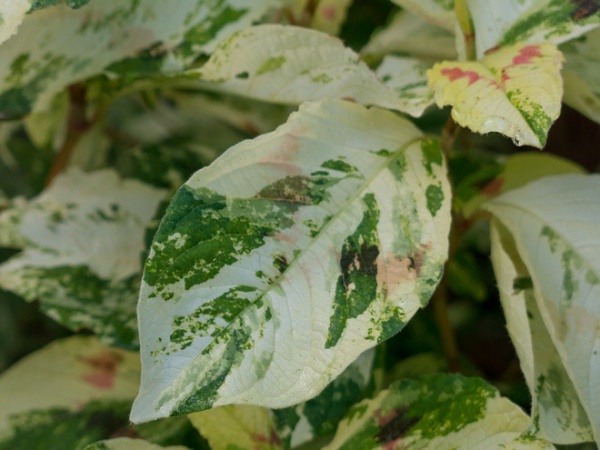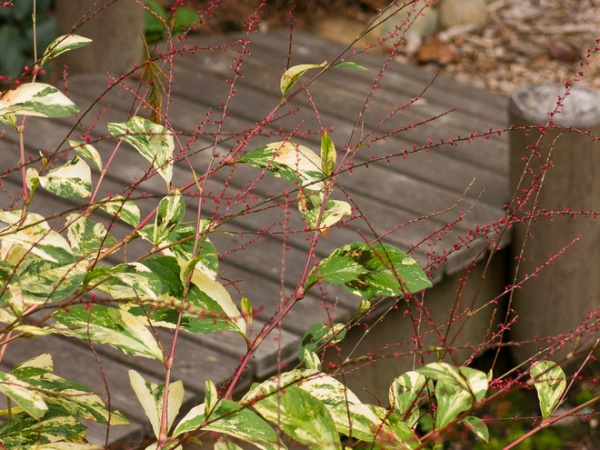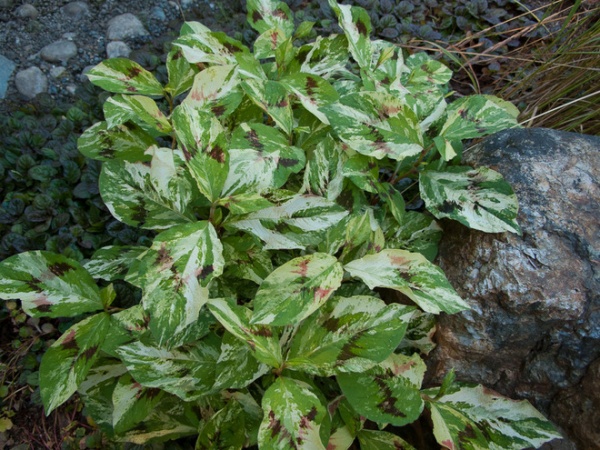Great Design Plant: Painter’s Palette Knotweed Adds Color in Shade
Sometimes you need something different to liven up the shade-garden tapestry of ferns, hostas and hellebores. Painter’s Palette knotweed (Persicaria virginiana ‘Painter’s Palette’) might be just the answer. This isn’t the highly invasive knotweed that threatens to engulf both ornamental and native plantings, but a better-behaved relative. Having said that, it is still quite vigorous and spreads by underground rhizomes as well as seed, especially in moist soil. I have found that in drier conditions it spreads very little, so choose your site wisely.
Mottled green and cream foliage is splashed irregularly with raspberry shades, and most leaves have a burgundy chevron. Painter’s Palette forms a mound of foliage, and an abundance of wiry stems of unusual red flowers rises above in midsummer. As an herbaceous perennial, it will die down in winter, which allows ephemeral spring-blooming bulbs to be tucked in underneath.

Botanical name: Persicaria virginiana ‘Painter’s Palette’ (syn. Tovara virginiana ‘Painter’s Palette’)
Common name: Painter’s Palette knotweed
Origin: The species is native to the eastern U.S. and Asia, but Painter’s Palette is a garden variety
Where it will grow: Hardy to -30 degrees Fahrenheit (USDA zones 4 to 8; find your zone)
Water requirement: Medium
Light requirement: I have found that partial shade is best, although several references suggest full sun also
Mature size: 2 feet tall and wide but has a spreading habit

Benefits and tolerances: Deer tolerant; drought tolerant once established; attracts butterflies
Seasonal interest: Spring and summer
When to plant: Spring or fall
Distinguishing traits:
Attractive variegated foliageInteresting red flowers in July and AugustA colorful ground cover for the shade gardenNoninvasive, although still vigorous under ideal conditions

How to use it:
As a ground cover where it will brighten up a shady spot under trees or tumbling down a stream bankIn large containers as a colorful summer foliage plant
The large oval leaves combine well with feathery ferns, bugleweed (Ajuga repens), dark-leaved coral bells (Heuchera spp) and bronze grasses, such as orange hair sedge (Carex testacea).
Planting notes: Plant it in well-drained soil and water until established.
More:
Set Your Shade Garden Aglow With Light
Browse more plants with beautiful foliage












